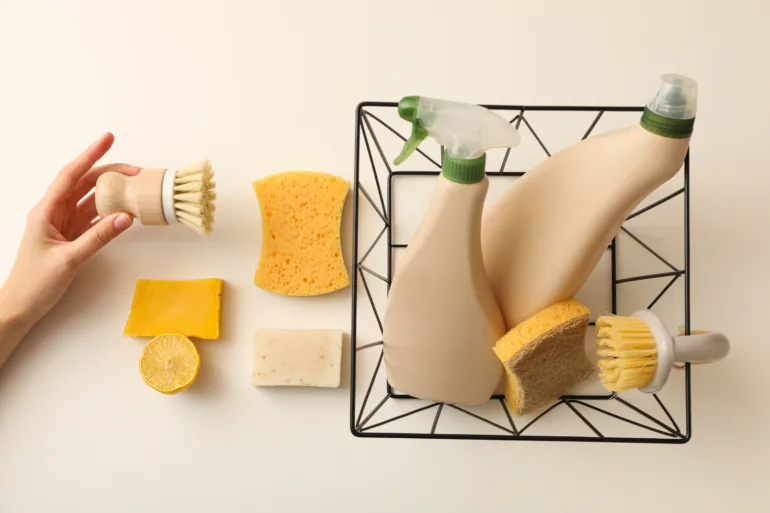You might think that washing dishes is one of those tasks where you can't go wrong. After all, you just rub, right? Is it really that simple? Obviously not! Many do not know which side of the dish sponge is for what. Are you using the right side of the sponge at the right time? Discover how to optimize your routine and protect your dishes - and your nerves! This is the real side of the dish sponge!
This is the right page dish sponges! If you've ever looked closely at a dish sponge, you know that it usually has two different surfaces: a softer side and a rougher side. Both have specific tasks, not just an aesthetic function. Do you know which page is for which task?
Soft Side: This is the foamy, tender side of the sponge. It is designed for gentle cleaning, so it is suitable for washing glasses, plates, cups and other delicate dishes, as it does not cause scratches or damage. The soft side is also great for applying detergent and creating a lather, making it easier to remove grease and small stains.
But beware! Although it is very useful, it is not suitable for all surfaces. If you use it to remove burnt food or heavily soiled surfaces, the sponge will quickly lose its functionality and will need to be replaced more often.
Caution is needed here too! If you use it on delicate dishes or surfaces with a coating such as Teflon, you may cause scratches or damage. Therefore, use the rough side only where it is really needed.
Why do we make mistakes when using a sponge? We often find ourselves in a routine and use the side of the sponge that is more convenient for us at that moment without thinking about the long-term consequences. Improper use can cause the container, the sponge to wear out and lead to that unpleasant situation when the sponge starts to smell and no longer works effectively.
How to extend the life of a sponge?
- Correct use: Use both sides of the sponge depending on the task – soft for more delicate dishes and rough for stubborn dirt.
- Regular rinsing: After each use, rinse the sponge thoroughly with warm water to remove food and detergent residues. Do not leave the sponge wet, as it can start to smell unpleasant.
- Disinfection: Disinfect the sponge occasionally in the microwave or soak it in hot water with vinegar or lemon to kill bacteria.
- Regular exchange: When you notice that the sponge is wearing out or losing its functionality, replace it. It is a hygienic tool, so it is important that it is always clean.

Practical tips for using the sponge:
- Kitchens with special needs: If you often prepare dishes that leave stubborn stains (e.g. stews, sauces), use separate sponges for different types of dishes.
- Versatility: You can also use the sponge to clean kitchen surfaces, tiles or even shoes (but not the same sponge as for dishes!).
- Storage: Store the sponge in a dry place where it can dry during use, as a wet sponge quickly becomes a breeding ground for bacteria.
Were you on the "wrong" team? Don't worry, you're not the only one. Many people do not know how to use a sponge correctly, but it is now clear that each side has its own task.
Washing dishes may not be your favorite chore, but with a little knowledge and the right use of a sponge, it can become faster, more efficient and even more enjoyable.







